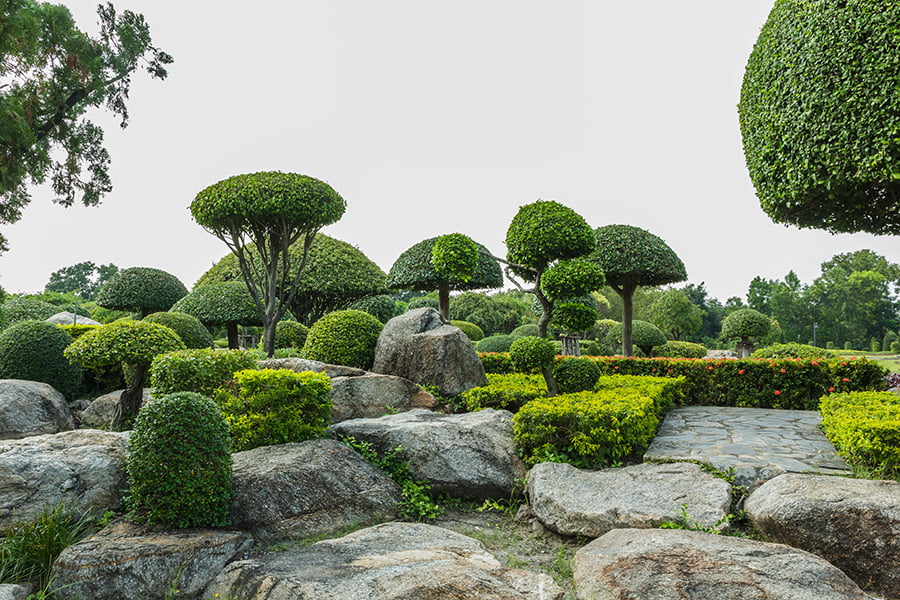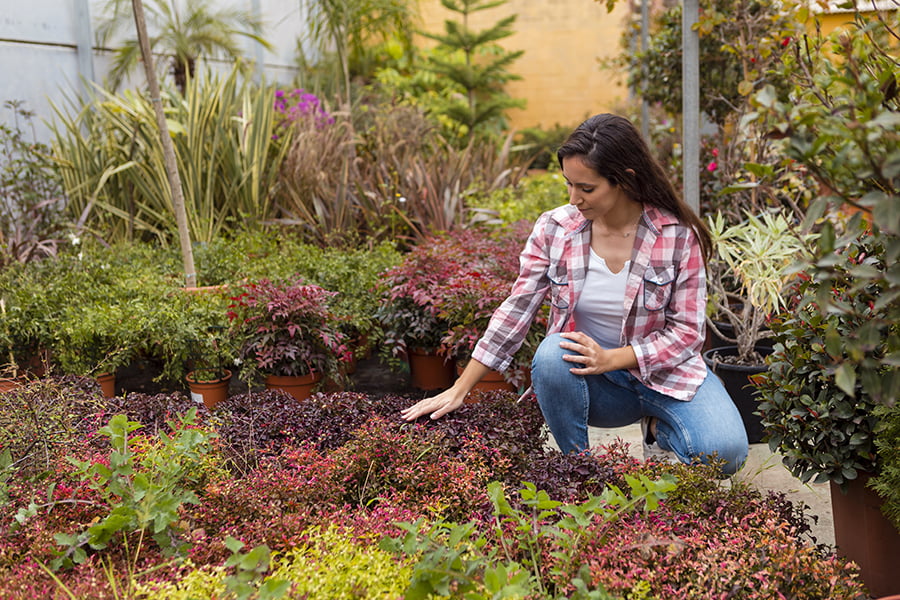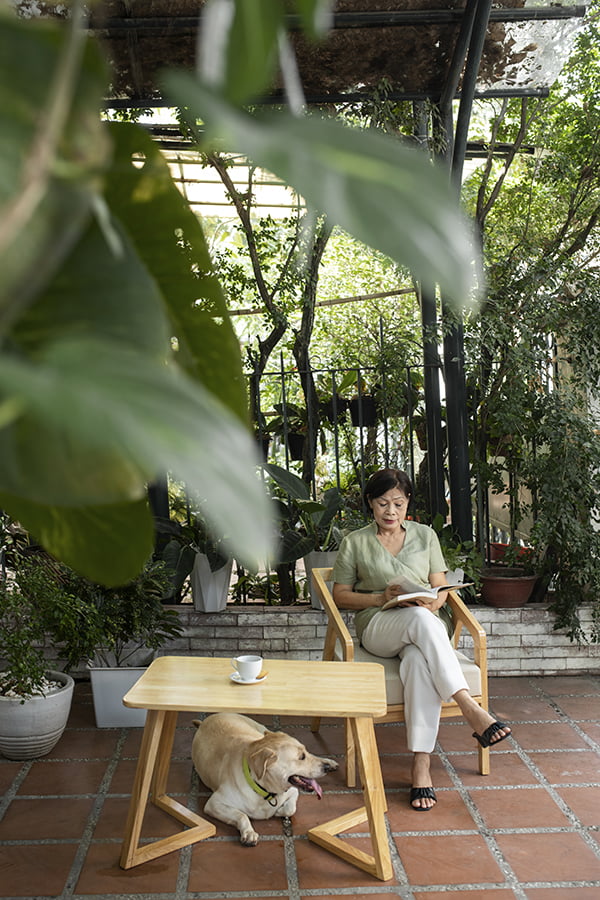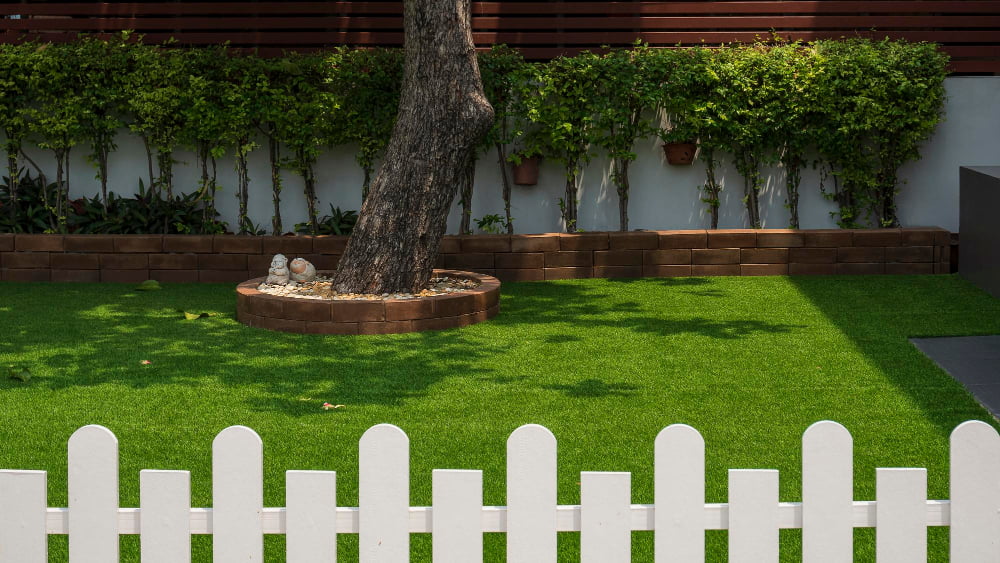Discover the essentials of modern landscape design, including trendsetting elements, sustainability practices, and innovative materials, to create a contemporary outdoor space that merges form and function.
Key takeaways:
- Modern landscape design emphasizes clean lines and simplicity.
- Plant selection focuses on form, texture, and minimal maintenance.
- Sustainability is a key aspect, with eco-friendly materials and native plants.
- Modern tropical landscaping incorporates exotic plants and lighting features.
- Minimalist low-maintenance gardens reduce upkeep with hardscaping and smart irrigation.
Elements of Modern Landscaping
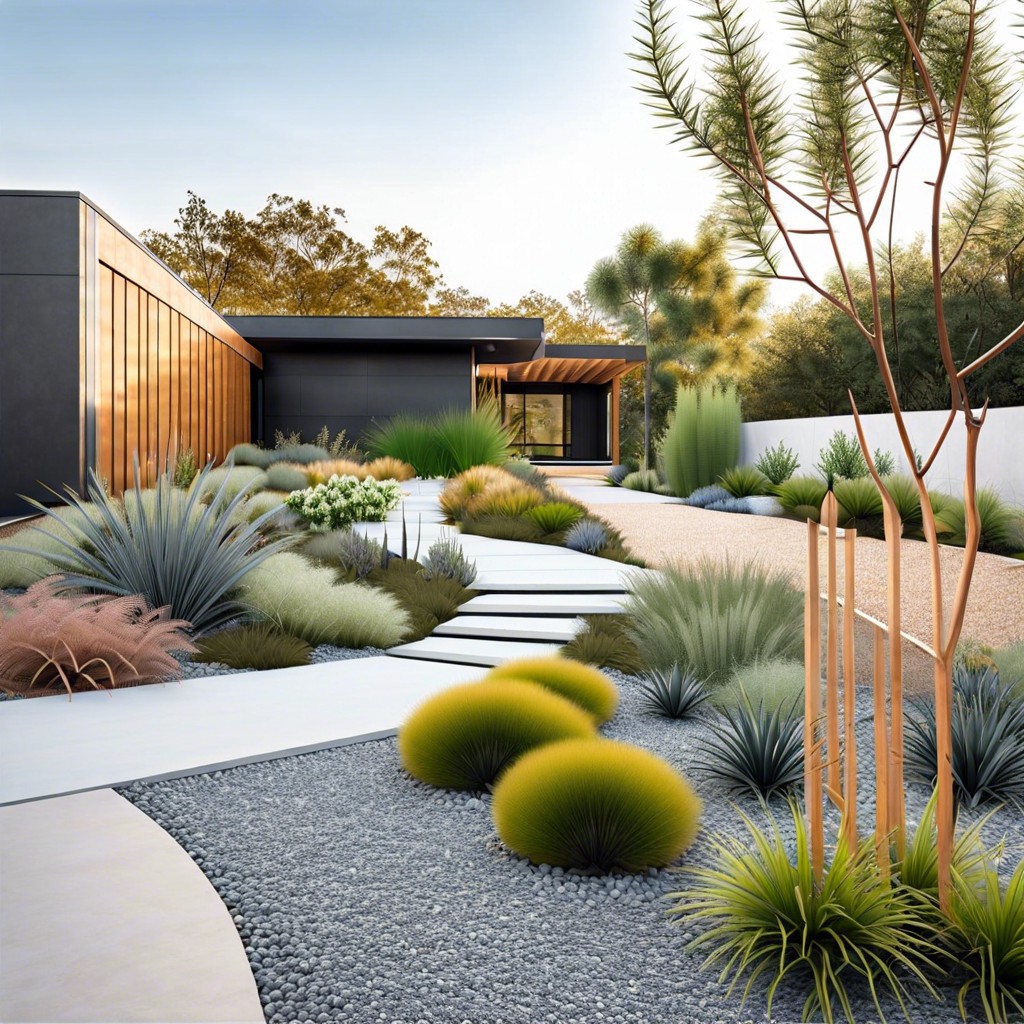
Modern landscape design emphasizes clean lines, sustainable practices, and a harmonious blend of architecture and nature. At its core, it’s about simplifying outdoor spaces to create a tranquil, uncluttered environment that reflects contemporary aesthetics.
Simplicity is a guiding principle, often resulting in a limited color palette and the use of geometric shapes. Hardscaping elements, like paved paths and patios, tend to carry a sleek, linear design that complements this minimalist approach.
Plant selection in modern landscaping focuses on form and texture over variety. Ornamental grasses, succulents, and other architecturally interesting plants are often chosen for their ability to create visual impact with minimal maintenance.
Another crucial aspect is the integration of technology and functionality. This might include modern irrigation systems that conserve water or outdoor lighting that enhances both safety and the ambience after sundown.
Sustainability is also a hallmark of modern design. Eco-friendly materials are selected whenever possible, and native plants are preferred for their adaptability to local conditions, requiring less water and care.
Outdoor living spaces are thoughtfully designed to extend the indoor living environment seamlessly. Furniture with clean lines and modern materials like steel and sustainable wood is used to maintain the aesthetic, while functional areas for cooking and dining merge with the surrounding landscape.
Ultimately, each element is chosen intentionally to create a cohesive and calming outdoor environment that’s at once both functional and aesthetically pleasing.
Modern Tropical Landscaping
Embracing the lush and vibrant aesthetic of the tropics, modern tropical landscaping incorporates a wide range of exotic plants that bring a sense of paradise right to your doorstep. The use of large-leaved foliage, such as palms and philodendrons, creates dramatic silhouettes and shadows that enhance the garden’s visual drama. To achieve a balanced look, these are often paired with bright, flowering plants—think hibiscus, bird of paradise, or frangipani—that add pops of color and an exotic flair.
To maintain the modern aesthetic, hard landscaping materials are often sleek and simple, with clean lines and neutral colors that allow the natural beauty of the plants to stand out. Natural stone, smooth concrete, and wood decking are popular choices that seamlessly blend the indoors with the outdoors.
Lighting plays a crucial role in elevating the nighttime ambiance of a tropical garden. Strategically positioned lights can highlight key plants or features, such as a water element, which is a common component in tropical landscapes. The gentle sound of water from a minimalist fountain or a carefully-placed water bowl enhances the serene and calming atmosphere, inviting relaxation.
Even in cooler climates, this garden style can be adapted by selecting hardy plants with a tropical look or using features such as heated garden beds and protective overhangs that extend the growing season for more weather-sensitive species. With thoughtful plant selection and placement, a modern tropical landscape can be both a retreat and a stunning visual display.
Minimalist Low-Maintenance Garden
Embracing simplicity and order, a minimalist low-maintenance garden focuses on creating a serene outdoor space with less upkeep. This design approach often incorporates hardscaping features, such as patios and pathways made from durable materials like natural stone or concrete, to reduce the need for constant gardening.
Selecting the right plants is crucial. Opt for perennial species that are hardy and able to thrive in the local climate without excessive care. Succulents are a popular choice, as they require minimal watering, and ornamental grasses that bring a graceful texture to the garden while also being drought-tolerant. Sparse planting will allow each plant to stand out as a design feature, with plenty of room to grow and minimal competition for resources.
Mulch is a minimalist gardener’s ally. It not only limits weed growth but also retains soil moisture, further cutting down maintenance. A simple, restricted color palette of greens and earth tones will underscore the aesthetic, fostering a calm and cohesive look.
Lastly, consider investing in smart irrigation systems. These modern technologies can be programmed to water your garden at optimal times to save water and further minimize garden chores. By integrating these elements thoughtfully, you can create a tranquil, modern garden retreat that requires little work to maintain its beauty.
Bold Colorful Patio Furniture
Incorporating vibrant patio furniture is a surefire way to inject personality into your outdoor space, serving as a visual anchor in a modern landscape. Here’s how to stylishly integrate bold colors into your patio:
Choose Standout Pieces: Opt for furniture that not only contrasts with the natural greens of the outdoor setting but also complements the overall design aesthetics. A striking red bench or bright blue chairs can serve as the focal point of your garden, drawing the eye and creating interest.
Material Matters: Select materials that are not just eye-catching but also durable and suited for outdoor use. Brightly colored metals or plastics can withstand the elements while maintaining their vivid hues.
Mix and Match: Don’t shy away from combining different colors and textures. A mosaic of colorful cushions or an assortment of multicolored stools adds layers to the visual experience without overwhelming the senses.
Play with Patterns: Geometric patterns and stripes on upholstery can add a contemporary edge to the space. This can be a subtle way to introduce color without the need for large, solid blocks of it.
Remember Balance: Although the focus is on boldness, balance it with neutral tones and natural materials in the surrounding area to avoid a chaotic look. This helps the colors to truly pop without dominating the landscape.
Accessorize Wisely: Outdoor rugs, throw pillows, and planters in complementary or contrasting colors can tie the entire look together. These elements can also be easily changed with the seasons or as design trends evolve.
Embrace Lighting: Consider how the furniture will interact with both natural and artificial lighting. Vibrant colors can look exceptionally stunning in the golden glow of sunset or under the soft ambiance of outdoor lighting fixtures at night.
By carefully selecting and situating bold, colorful patio furniture, you can make a lively and inviting outdoor space that reflects the cutting-edge ethos of modern landscape design.
Drought-Resistant Native Garden
Incorporating a drought-resistant native garden into your landscape design not only helps to conserve water but also supports local biodiversity. By selecting plants that are adapted to your region’s climate, soil, and natural water availability, you can create a self-sustaining ecosystem with minimal need for additional watering or maintenance.
Such gardens often feature grasses, succulents, and shrubs that thrive in drier conditions. For instance, in regions like California, native plants like California poppy, salvia, and manzanita are popular choices that provide vibrant colors and are well-suited to withstand periods of low rainfall.
Apart from their ecological benefits, these plants require less care from the homeowner. Once established, they seldom need fertilization and are more resistant to pests and diseases prevalent in their local environment. This makes them ideal for gardeners looking for both an aesthetically pleasing and low-effort landscape solution.
Creating zones within your garden based on water requirements, a practice known as hydrozoning, is an effective method to maximize efficiency. By grouping plants with similar water needs, you can irrigate more precisely and avoid overwatering, saving both water and time.
A native, drought-resistant garden is not only practical but can also provide a beautiful, textured backdrop to your outdoor living space, seamlessly blending in with the natural surroundings and reflecting the beauty of your local ecosystem.
